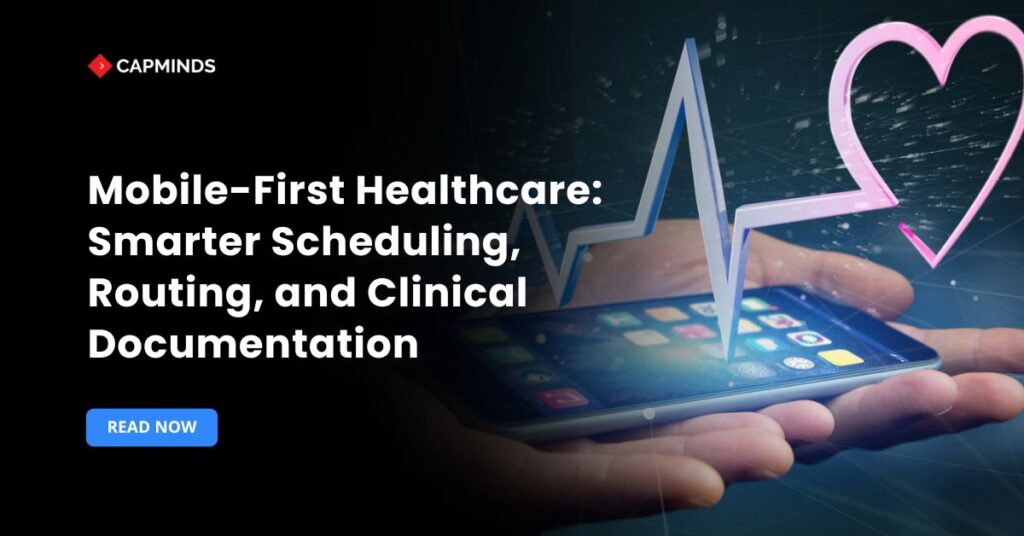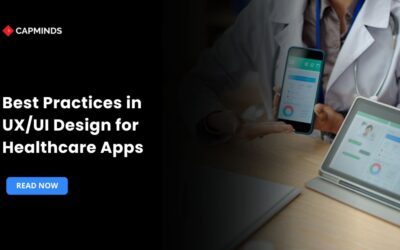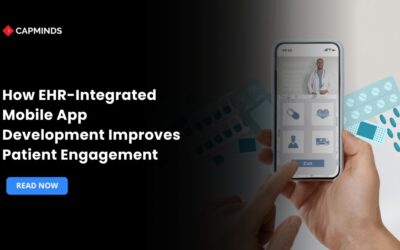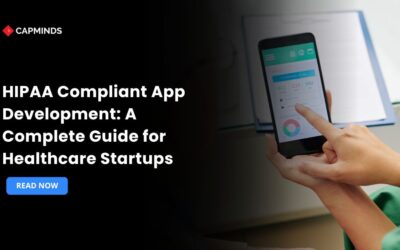Mobile-First Healthcare: Smarter Scheduling, Routing, and Clinical Documentation
Almost every healthcare provider, nurse, or administrator carries a smartphone throughout the day. It’s second nature — which is why mobile-first healthcare app development has become central to modern care delivery. This isn’t just a tech trend; it’s a movement that’s helping healthcare teams in hospitals and clinics complete tasks faster, more efficiently, and with fewer errors.
Think about how much time is wasted walking back and forth to desktop stations. Now, imagine being able to document a patient’s vitals or treatment notes right there at the bedside. Or booking an appointment while walking between exam rooms. That’s what mobile-first tools are making possible.
Embracing a Mobile-First Approach in Healthcare
Healthcare teams aren’t the only ones who’ve gone mobile; patients have too. They’re used to doing everything from their phones: booking flights, checking bank balances, texting customer support. Naturally, they expect the same from their care providers. If they can message their doctor, see lab results, or reschedule an appointment from an app, they’re more likely to stay engaged and loyal.
But this isn’t just about convenience. It’s about survival. Clinics that stick to old-school workflows, paper charts, and desktop-only systems are going to fall behind. Mobile access reduces errors, streamlines documentation, and provides real-time data when needed. And that can mean better care.
It also fits how care is delivered now. Nurses are checking in on patients, doctors are jumping between telehealth and in-person consults, and the front desk is trying to reshuffle schedules because someone canceled last minute. It’s nonstop.
And in the middle of that chaos, having to wait on a desktop login or shuffle through paper? It just doesn’t work anymore. People need to grab their phone, open an app, and take care of what needs doing—right then and there.
- Patients are on the same page.
- They don’t want to call and wait on hold just to ask for lab results.
- Most would rather check it on their phone while drinking coffee or commuting to work. Same goes for booking appointments or sending a quick question to their doctor.
- And for clinics or hospitals trying to hold on to their patients, offering that kind of convenience isn’t a bonus; it’s survival.
- A mobile-first strategy opens a “digital front door” that makes it easier for patients to engage with care, which can improve satisfaction and outcomes.
Providers, too, benefit from the flexibility of mobile access. A physician can review a patient’s lab results on her phone from any location.
A home health nurse can update a care plan on a tablet while still at the patient’s house. By embracing mobile tools, healthcare teams can respond faster, collaborate more easily, and ensure information flows seamlessly wherever care happens.
Related: 10 Must-Have Features for Successful Healthcare Mobile Apps
1. Smarter Scheduling with Mobile Technology
Every practice knows that scheduling can either support your operations or hold them back.
In the past, scheduling meant long hold times, manual entry, and mismatched appointments. It wasn’t ideal for patients or staff.
Mobile-first scheduling tools are solving this. They give patients the freedom to book, cancel, or reschedule at any time, often with just a few taps. And for the clinic? It cuts down on calls, frees up staff, and fills calendars faster.
Here’s what a mobile-first scheduling system does well:
- Patients book on their own time, without needing to call.
- The system matches them with the right provider, based on need and availability.
- Real-time updates mean everyone sees the same schedule.
- If someone cancels, the spot gets filled quickly through automated waitlists.
- Reminders go out through push notifications or SMS, reducing no-shows.
For clinics, this means fewer gaps in the day. For patients, it means a smoother path to care. The overall effect? A schedule that runs more like clockwork and less like a puzzle.
It also gives providers better visibility. A clinician running behind can check the next appointment without leaving the exam room. Coordinators can manage multiple calendars from a single dashboard. No sticky notes or paper calendars required.
2. Efficient Routing and Navigation through Mobile
Routing isn’t just a logistics issue; it’s a care issue.
When patients can’t find the right building or a home care nurse gets stuck in traffic, delays happen. And in healthcare, delays cost more than time.
Mobile routing tools are helping teams avoid those bottlenecks.
Inside the hospital, mobile wayfinding apps guide patients from the parking lot to the exact clinic room. That first-time visitor who used to get lost? Now they’re walking in confidently, right on time.
For home health or mobile services, routing tools go a step further. They optimize the order of visits based on real-time traffic and location. A nurse sees their full day mapped out, no guesswork, no paper maps.
Here’s how routing becomes smarter with mobile:
- Patients get directions that adjust in real-time.
- Drivers or field staff receive dynamic routes based on traffic.
- Dispatchers monitor movement and adjust assignments on the fly.
- Everyone stays in sync, no missed handoffs or long gaps.
When routes are optimized, care delivery improves. Patients aren’t left waiting. Providers aren’t burning time behind the wheel. Everyone wins, especially the person who needed care in the first place.
3. Mobile-Enabled Clinical Documentation on the Go
Ask any nurse or physician what slows them down, and documentation will likely come up. Not the importance of it, but the process. Typing notes hours after seeing a patient. Recalling details at the end of a shift. Walking away from the bedside to find a workstation.
Mobile-first documentation flips that script. The idea is that doctors and nurses can document patient care in real time using mobile devices, rather than waiting to find a desktop computer or dealing with stacks of paper later.
Instead of separating care and charting, it blends them. A nurse documents vitals on a tablet as they’re taken. A physician dictates a note before stepping out of the room. A home health worker uploads a photo of a wound during the visit.
Mobile documentation tools also come with features that directly benefit patient care quality.
- A smartphone’s integrated camera, for instance, allows clinicians to attach photos to the medical record on the spot.
- A wound care nurse can take a photo of a surgical incision or pressure ulcer during a home visit, then upload it immediately for the physician to review.
- This visual documentation helps track healing progress and improves communication among the team.
- All of this happens securely through the app, maintaining privacy while adding rich information to the patient’s chart.
Another leap forward is the use of voice recognition and even AI assistance in mobile documentation. Typing out long notes on a small screen can be cumbersome. But clinicians can now simply dictate their findings.
Many mobile EHR applications include voice-to-text capabilities or connect to dictation services. So, a doctor can speak their note and have it transcribed instantly.
Why does this matter? Because documentation overhead is not trivial, studies have found that nurses can spend around 2 hours of a 12-hour shift just doing documentation.
That’s time pulled away from direct patient care or from finishing work on time. If mobile documentation tools can streamline this, it directly combats burnout and allows more focus on patients.
Related: 10 ROI Driven Features to Include in Your Custom Healthcare Application
Unlock Mobile-First Healthcare With CapMinds’ Smart Tech Solutions
At CapMinds, we help healthcare organizations embrace the power of mobility, making clinical care faster, smarter, and more accessible for everyone involved.
Whether you’re managing patient flow in a hospital, scheduling home health visits, or improving documentation on the go, our mobile-first solutions are built to deliver.
We specialize in:
- mHealth App Development for Smarter Care Coordination
- Patient Portal Apps with real-time appointment, messaging, and lab access
- Mobile EHR Integrations for bedside charting and remote documentation
- Digital Scheduling Systems that reduce no-shows and boost efficiency
- Routing & Navigation Tools for home health and hospital wayfinding
- Voice-to-Text Clinical Documentation and AI-powered mobile charting
Don’t let outdated workflows slow you down. Partner with CapMinds to build mobile-first healthcare systems that work at the speed of care. Contact us today to get started.




